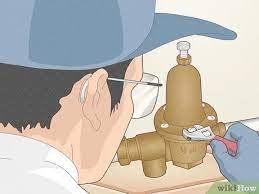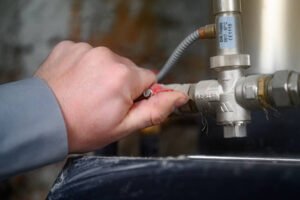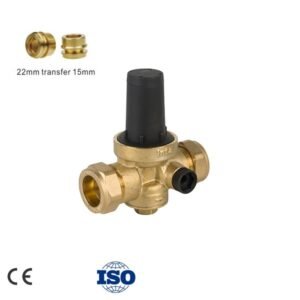Thermostatic mixing valves (TMVs) play a crucial role in managing water temperatures within domestic and commercial settings, ensuring safety and comfort while reducing the risk of scalding injuries. These valves precisely mix hot and cold water to a desired, pre-set temperature before it reaches the user, providing consistent and safe water temperatures for various applications such as bathing, showering, and handwashing. The importance of TMVs has grown significantly with increased awareness about scalding risks and the need for energy efficiency in water heating systems.
1. Understanding Thermostatic Mixing Valves
TMVs are designed to maintain a stable output temperature even when there are fluctuations in the water supply temperatures or pressures. This stability is crucial in preventing scalding, which can occur in seconds, especially at temperatures above 60°C (140°F). By blending hot water (which can be stored at temperatures high enough to kill bacteria like Legionella) with cold water to a safer, more usable temperature, TMVs mitigate the risk of burns from overly hot water.

2. The Mechanism of TMVs
A typical TMV consists of a valve body, a thermal actuator, and a mixing chamber. The thermal actuator, sensitive to temperature changes, expands or contracts to adjust the mix of hot and cold water. This adjustment ensures the output temperature remains constant, even with variations in the pressure or temperature of the incoming water supplies.
3. Applications of TMVs
TMVs are used across a broad spectrum of settings, from residential bathrooms to healthcare facilities, schools, and commercial buildings. In healthcare settings, particularly, TMVs are critical for patient safety, given the vulnerability of certain groups (such as the elderly, young children, and those with reduced mobility or sensitivity) to scalding.
4. Standards and Certifications
To ensure reliability and safety, TMVs are subject to stringent standards and certifications. For instance, models like the Heape range of thermostatic mixing valves are designed and manufactured to meet the requirements of BS EN 1111:2017 and BS EN 1287:2017. These valves have been independently tested and approved under schemes such as TMV2 and TMV3, certifying their suitability for use in both domestic and healthcare applications.
5. Installation and Maintenance
Proper installation and maintenance are key to the effective operation of TMVs. They should be installed in accessible positions to facilitate easy maintenance, commissioning, and testing. It’s also essential for these valves to be installed in compliance with local regulations and standards to ensure safety and efficiency.
6. Safety Precautions
TMVs must be regularly inspected and maintained to ensure they function correctly. This includes annual verifications against the original set temperature results and performance checks to confirm that the fail-safe shut-off is working as intended. Such precautions are vital for sustaining the valve’s reliability in preventing scalding incidents.
7. Conclusion
Thermostatic mixing valves are indispensable in modern plumbing systems, providing a blend of safety, comfort, and efficiency. By ensuring water is delivered at consistent, safe temperatures, TMVs protect users from scalding, reduce the proliferation of harmful bacteria, and contribute to the overall safety and hygiene of water systems. As awareness of their benefits grows, so does the emphasis on standards, installation practices, and maintenance to maximize their effectiveness and reliability.






